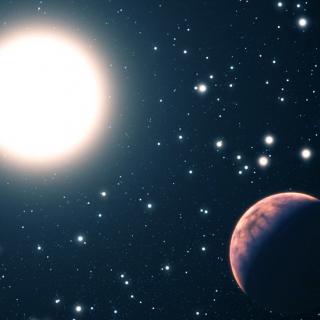Bibcode
Jofré, P.; Heiter, U.; Soubiran, C.; Blanco-Cuaresma, S.; Worley, C. C.; Pancino, E.; Cantat-Gaudin, T.; Magrini, L.; Bergemann, M.; González Hernández, J. I.; Hill, V.; Lardo, C.; de Laverny, P.; Lind, K.; Masseron, T.; Montes, D.; Mucciarelli, A.; Nordlander, T.; Recio Blanco, A.; Sobeck, J.; Sordo, R.; Sousa, S. G.; Tabernero, H.; Vallenari, A.; Van Eck, S.
Referencia bibliográfica
Astronomy and Astrophysics, Volume 564, id.A133, 27 pp.
Fecha de publicación:
4
2014
Revista
Número de citas
283
Número de citas referidas
254
Descripción
Context. To calibrate automatic pipelines that determine atmospheric
parameters of stars, one needs a sample of stars, or "benchmark stars",
with well-defined parameters to be used as a reference. Aims: We
provide detailed documentation of the iron abundance determination of
the 34 FGK-type benchmark stars that are selected to be the pillars for
calibration of the one billion Gaia stars. They cover a wide range of
temperatures, surface gravities, and metallicities. Methods: Up
to seven different methods were used to analyze an observed spectral
library of high resolutions and high signal-to-noise ratios. The
metallicity was determined by assuming a value of effective temperature
and surface gravity obtained from fundamental relations; that is, these
parameters were known a priori and independently from the spectra. Results: We present a set of metallicity values obtained in a
homogeneous way for our sample of benchmark stars. In addition to this
value, we provide detailed documentation of the associated
uncertainties. Finally, we report a value of the metallicity of the cool
giant ψ Phe for the first time.
Based on NARVAL and HARPS data obtained within the Gaia DPAC (Data
Processing and Analysis Consortium) and coordinated by the GBOG
(Ground-Based Observations for Gaia) working group and on data retrieved
from the ESO-ADP database.Tables 6-76 are only available at the CDS via
anonymous ftp to http://cdsarc.u-strasbg.fr
(ftp://130.79.128.5) or via http://cdsarc.u-strasbg.fr/viz-bin/qcat?J/A+A/564/A133
Proyectos relacionados

Pruebas Observacionales de los Procesos de Nucleosíntesis en el Universo
Recientemente se han llevado a cabo varios análisis espectroscópicos de estrellas con planetas. Uno de los resultados más relevantes ha sido descubrir que las estrellas con planetas son en promedio más metálicas que las estrellas del mismo tipo espectral sin planetas conocidos (Santos, Israelian & Mayor 2001, A&A, 373, 1019; 2004, A&A, 415, 1153)
Garik
Israelian